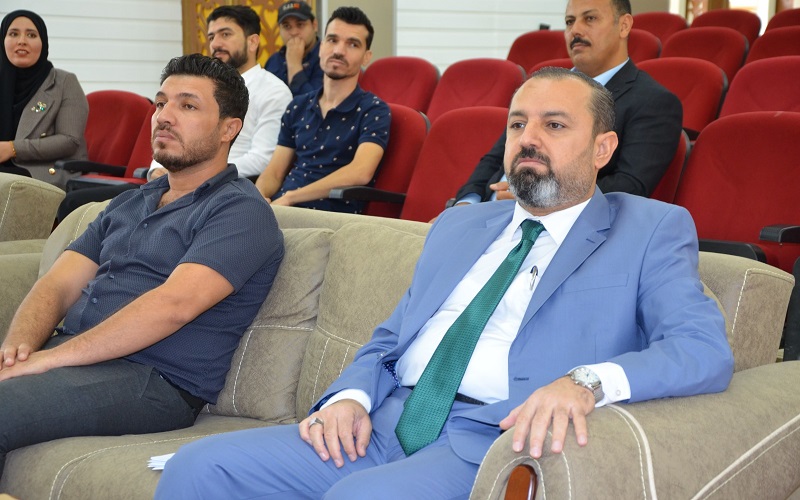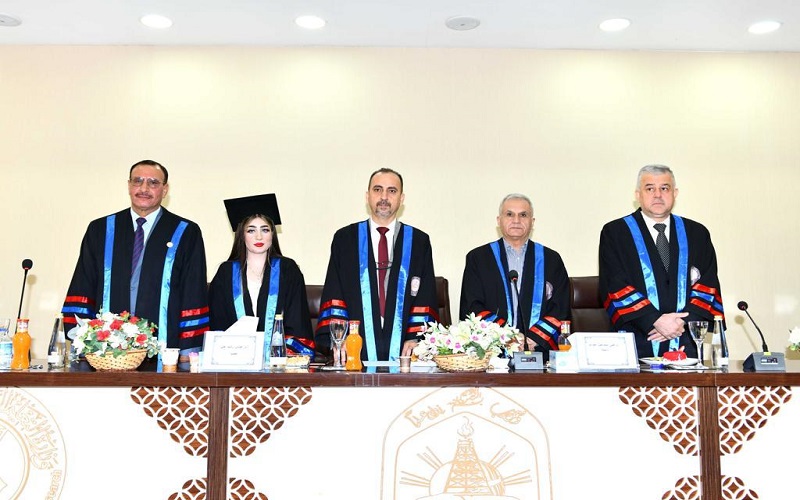The discussion took place in the College of Science/Department of Applied Geology entitled “Assessing the Environmental and Health Effects of Copper in the Elements of Different Environmental Zones in Kirkuk - Northern Iraq” by the student Hanan Muwaffaq Muhammad and under the supervision of Professor Dr. Hassan Ahmed Ali Al-Jumaili. Part of the discussion was attended by the Dean of the College of Science, Assistant Professor Dr. Neama Ali Ahmed, the Scientific Assistant, Professor Dr. Mohsin Omar Mohammed, the Head of the Applied Geology Department, Professor Dr. Soran Nihad Sadiq, and a number of the college’s lecturers.
The study aimed to investigate the concentrations and behavior of copper in the surface soil and its relationship with geochemical and environmental characteristics, to find the level of copper concentration in some selected plants in the study area and to study the factors controlling its availability, Evaluating environmental pollution in soil and some plant grains and their carcinogenic and non-carcinogenic effects on human health, in addition to studying their health risks.
The results showed that the average concentration of copper in the soil of the study area exceeded the geochemical values recorded globally, which indicates the presence of copper contamination in the soil of the study area. Despite this, the concentrations of copper in garlic and onions were less than the permissible value according to the World Health Organization. The results of the risk factor and health risk index for surface soil samples for copper were less than one, indicating that there is no serious impact on human health. The rates of the results of estimating daily consumption and the risk index for copper for the selected plant types also showed that they were less than one, except for one type of garlic plant sample (Chinese garlic), which gave the highest value (greater than one) compared to other plant types, which indicates a health risk to the body. Human.
In conclusion, the researcher recommended the need to keep industrial activities away from the city center and residential areas, not to grow plants near human and industrial activities and to conduct a detailed study of the different parts of plants (roots, stems and leaves) to know the exact concentration of copper and other elements... establish health control over plants. Imported to preserve human health and safety, to establish control over the throwing of waste in the areas designated for it as well as quickly removing it from residential places to preserve human health.

 Arabic
Arabic  English
English 
